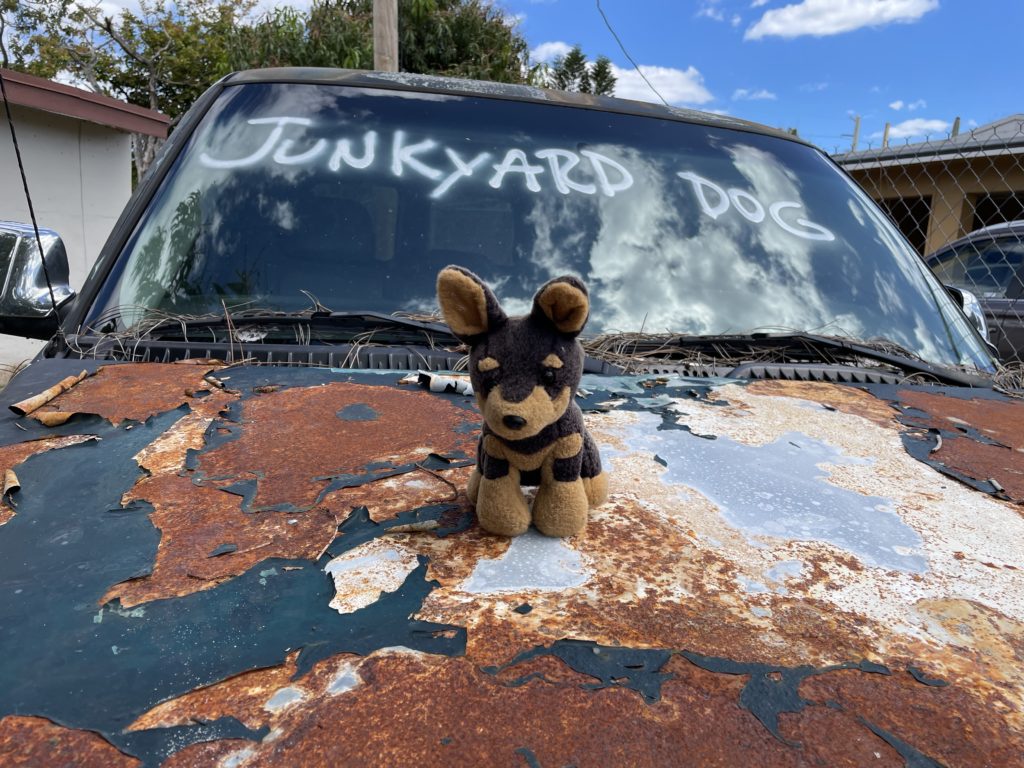Not worth fixing your car? Consider selling it to a junkyard or donating it for a tax deduction.
Sometimes, you find yourself in a situation where your vehicle is no longer economical to repair. Whether it’s due to extensive damage, high repair costs, or simply old age, having a car that isn’t worth fixing can be a dilemma.
Fortunately, there are several options available to deal with a car in this condition. From selling it to a junkyard for parts or recycling to donating it to a charity for a tax deduction, there are ways to responsibly dispose of your vehicle. We will explore what you can do with a car that is not worth fixing and help you make an informed decision.

Credit: www.swapmotors.com
Sell The Car
When your car is not worth fixing, selling it is a practical option. You can either sell it privately or to a junkyard for cash. Selling the car as-is can save you from spending money on repairs and help you make some money from the vehicle.
Sell the CarIf you have a car that is not worth fixing, selling it could be a viable option. By selling the car, you can recoup some of your investment and put it towards a newer, more reliable vehicle. To effectively sell your car, there are a few steps you need to take: evaluating the market value and advertising the car for sale.Evaluate the Market ValueTo determine a fair selling price for your car, you need to evaluate its market value. This involves researching similar cars in your area that are currently for sale or have recently been sold. Consider factors such as the make, model, year, mileage, condition, and any additional features or upgrades your car may have.Trade-in For A New Car
Considering trading in your car for a new one when it’s not worth fixing can be a practical solution. This option allows you to offload your old car and put its value toward the purchase of a newer, more reliable vehicle. Here are the steps you should follow to ensure you get the best trade-in deal.
Research Trade-in Values
Before heading to a dealership, conduct thorough research on your car’s trade-in value. Use online tools and resources, such as Kelley Blue Book, Edmunds, or AutoTrader, to get an estimate. Take into account your car’s make, model, year, mileage, and overall condition. Having this baseline knowledge will help you negotiate effectively.
Negotiate With Dealerships
When negotiating with dealerships, ensure you are well-prepared. Present the researched trade-in value and be confident in advocating for a fair deal. Be willing to walk away if the dealership’s offer does not meet your expectations. Consider obtaining quotes from multiple dealerships to leverage the competition and maximize your trade-in value.
Donate The Car
Donating your car to a charity is a noble way to get rid of a vehicle that is not worth fixing.
Find A Reputable Charity
Search for a well-established charity that accepts car donations in your area.
Determine Tax Deductibility
Check with your tax advisor to see if you are eligible for a tax deduction.
Part Out The Car
When a car is not worth fixing, a great option is to part out the car. This involves disassembling the vehicle and selling its salvageable parts for profit. It can be a practical way to recoup some of the lost value of the car and help others who may need those parts for their vehicles.
Identify Salvageable Parts
To part out a car effectively, start by identifying which parts are still in good condition and can be salvaged. This includes components like the engine, transmission, doors, windows, electronics, and interior parts. Evaluate the condition of each part carefully to determine its resale value.
Sell The Parts Online
Once you have identified salvageable parts, the next step is to sell them online. Create listings on various platforms such as eBay, Craigslist, or specialized auto parts websites. Provide detailed descriptions and clear photos to attract potential buyers. Pricing the parts competitively will help them sell faster.
Consider Scraping
When your car reaches a point where the cost of repairs outweighs its value, it may be time to consider scrapping it. Scrapping a car involves selling it to a scrapyard or recycling center. Here’s what you need to know about the process.
Find Scrapyard Or Recycling Center
If you decide to scrap your car, the first step is to find a reputable scrapyard or recycling center. Look for facilities that adhere to environmental standards and offer fair prices for scrap metal and salvageable parts. You can search online or ask for recommendations from local mechanics or friends who have scrapped their vehicles in the past.
Prepare The Car For Scrap
Prior to sending your car to the scrapyard, there are a few steps you should take to prepare it for scrapping. Firstly, remove any personal belongings and valuable items from the vehicle. Next, ensure that all fluids, such as oil, coolant, and fuel, are drained to prevent environmental contamination. You should also remove the license plates and cancel the insurance on the vehicle. Lastly, if you have the means, consider removing any valuable parts that can be sold separately, such as the battery or tires.
Repurpose The Car
If you find yourself with a car that is not worth fixing, don’t let it go to waste. Instead, consider repurposing it in creative and innovative ways. Repurposing your old car not only gives it a new lease on life but can also add a unique touch to your surroundings. Here are a few exciting ideas to consider:
Convert To An Art Installation
One of the most visually appealing ways to repurpose your car is by transforming it into an art installation. Whether you have an artistic flair yourself or want to enlist the help of a local artist, turning your old car into a stunning work of art can be a real head-turner. Think bold colors, intricate designs, and a touch of quirkiness to captivate anyone who lays eyes on it. Placed in your front yard or as a centerpiece in your garden, this art installation will undoubtedly become a conversation starter for both visitors and passersby.
Transform Into A Garden Planter
Another great way to repurpose your old car is to transform it into a garden planter. This idea is especially perfect if you have a love for gardening or want to add a green touch to your outdoor space. The rusty body of your car can provide a unique backdrop for flowers, herbs, or even small shrubs. Consider removing the car’s doors and windows to allow the plants to thrive or use the trunk as a raised bed for your favorite vegetables. With a little creativity and some green thumbs, your car will blossom into something truly extraordinary.
Repurposing a car that is beyond repair not only saves it from ending up in a scrapyard but also gives it a new purpose and a new lease on life. Whether you choose to convert it into an art installation or transform it into a garden planter, these unique ideas will not only add visual interest to your surroundings but also showcase your creativity and resourcefulness. So, why let your old car gather dust when it can become a stunning centerpiece or a green oasis in your backyard?
Keep It For Spare Parts
If you find yourself with a car that is not worth fixing, you may be wondering what to do with it. One option is to keep it for spare parts. While it may seem counterintuitive to hold onto a vehicle that is no longer running, keeping it for spare parts can actually be a smart move. This way, you can salvage usable components from your old car and potentially save money in the long run.
Choose A Storage Solution
Before you start dismantling your car, it is important to choose a suitable storage solution. Depending on the space available to you, you can consider keeping the car in a garage, carport, or rented storage unit. If possible, opt for an enclosed space to protect the parts from the elements and reduce the chances of theft or damage.
Label And Organize Parts
Once you have secured a storage space, the next step is to label and organize the parts. This will save you time and frustration when you eventually need to find a specific component. Create a detailed inventory of the different parts you remove, and label them accordingly. You can use ziplock bags or small containers to store smaller items, while larger components can be placed on shelves or racks.
Here is an example of how you can organize your spare parts:
| Component | Location in the Car | Storage Container |
|---|---|---|
| Alternator | Engine bay | Plastic bin labeled “Engine Components” |
| Headlights | Front of the car | Ziplock bag labeled “Lighting” |
| Seats | Interior | Storage box labeled “Interior Parts” |
By organizing your spare parts in this manner, you can easily locate the components you need when the time comes.
Keeping a car that is not worth fixing for spare parts can be a practical choice. With a suitable storage solution and a well-organized inventory of labeled parts, you can have peace of mind knowing that you have a valuable resource at your fingertips. Plus, when you eventually need a replacement part for your current car, having a stock of spare parts can save you both time and money.

Credit: junkyarddogonline.com
Offer The Car For Free
When your car is not worth fixing, one option is to offer it for free to someone who might be able to use it for parts or as a fixer-upper. This can be a generous way to give back to your community while also ridding yourself of an unwanted vehicle.
Post An Ad For Free Car
Consider posting an ad online or on community bulletin boards offering the car for free. Be sure to include information about the car’s condition and any issues it may have, as well as details on whether it is drivable or if it would need to be towed. Including photos can also help attract potential recipients.
When creating the ad, emphasize that the car is being given away for free and be clear about any conditions or requirements you may have for potential recipients. This will help ensure that you find someone who will make good use of the car.
Screen Potential Recipients
Once you have posted the ad, be prepared to screen potential recipients. It’s important to vet the individuals who respond to your offer to make sure the car is going to someone who truly needs it and will make use of it. You may want to ask for information about their plans for the car and ensure that they have a way to transport or tow it.
Meeting potential recipients in person can also help you gauge whether they are a good fit for the car. Trust your instincts and be wary of anyone who seems to be looking for a free car for the wrong reasons.
Use It For Learning Or Training
You can repurpose your old car for educational purposes.
Turn It Into A Diy Project
Transform the car into a hands-on project for personal growth.
Donate To Vocational School
Support students by providing a valuable asset for skill development.
Dispose Of The Car Properly
When your car is not worth fixing, it’s crucial to dispose of it properly to protect the environment and comply with regulations.
Remove And Dispose Of Hazardous Materials
Before disposing of the car, make sure to remove any hazardous materials such as battery acids and coolants.
Follow Local Disposal Regulations
Be sure to adhere to local disposal regulations, which may include specific guidelines for scrapping vehicles in your area.

Credit: junkyarddogonline.com
Conclusion
If you find yourself with a car that’s not worth fixing, there are several options to consider. Selling it for parts, trading it in, or donating it can all be viable paths to freeing up space and potentially some extra cash.
Whatever you choose, do your research and use these tips to make the best decision for you and your situation.


